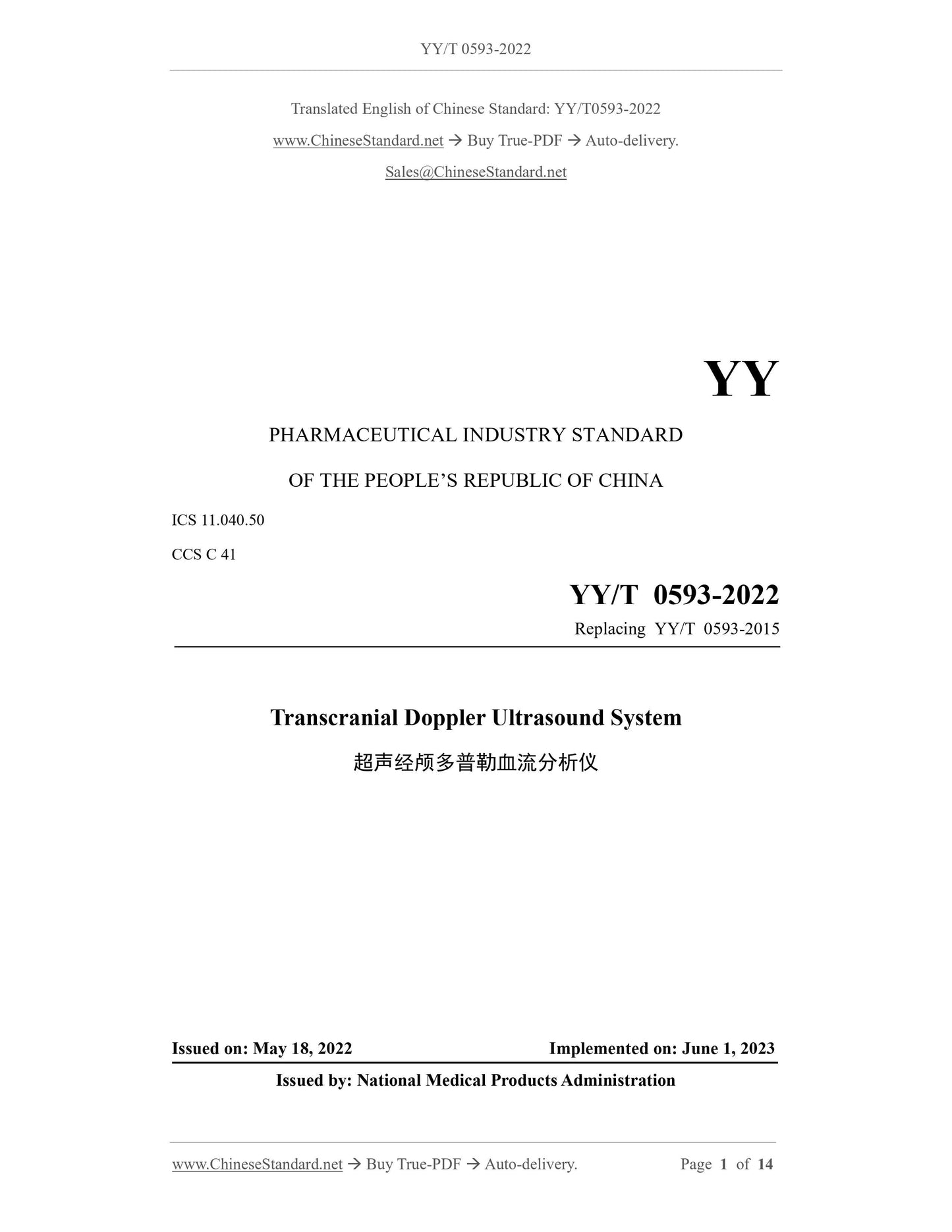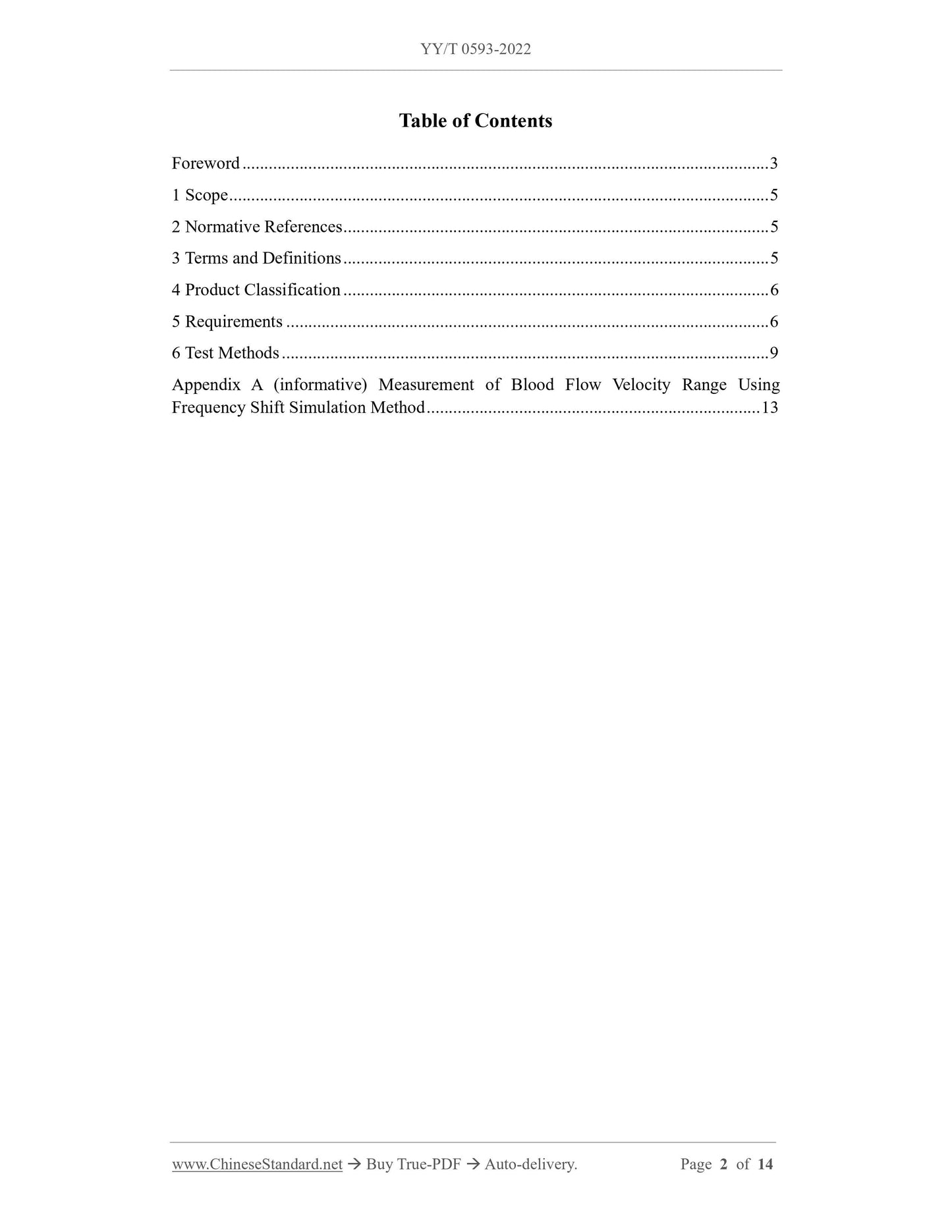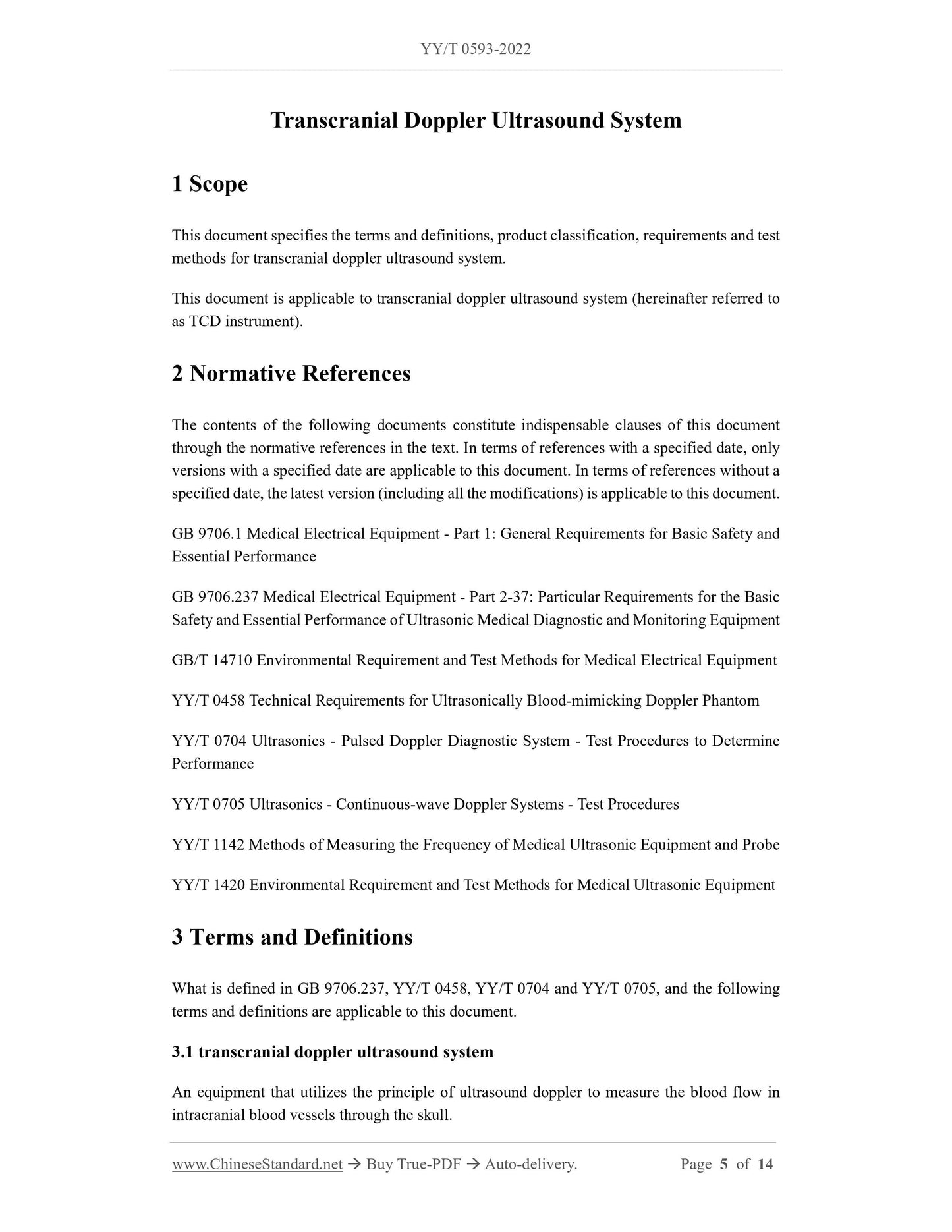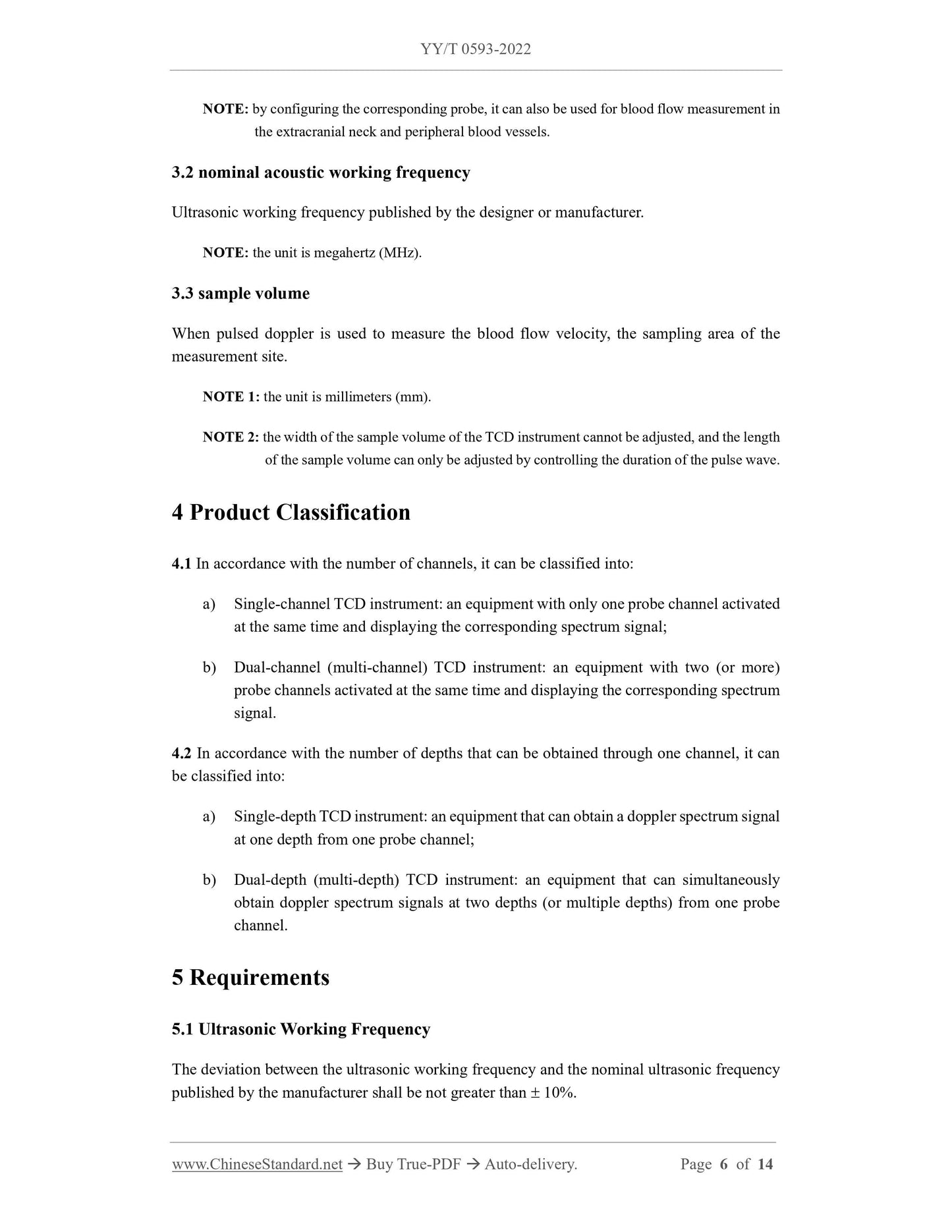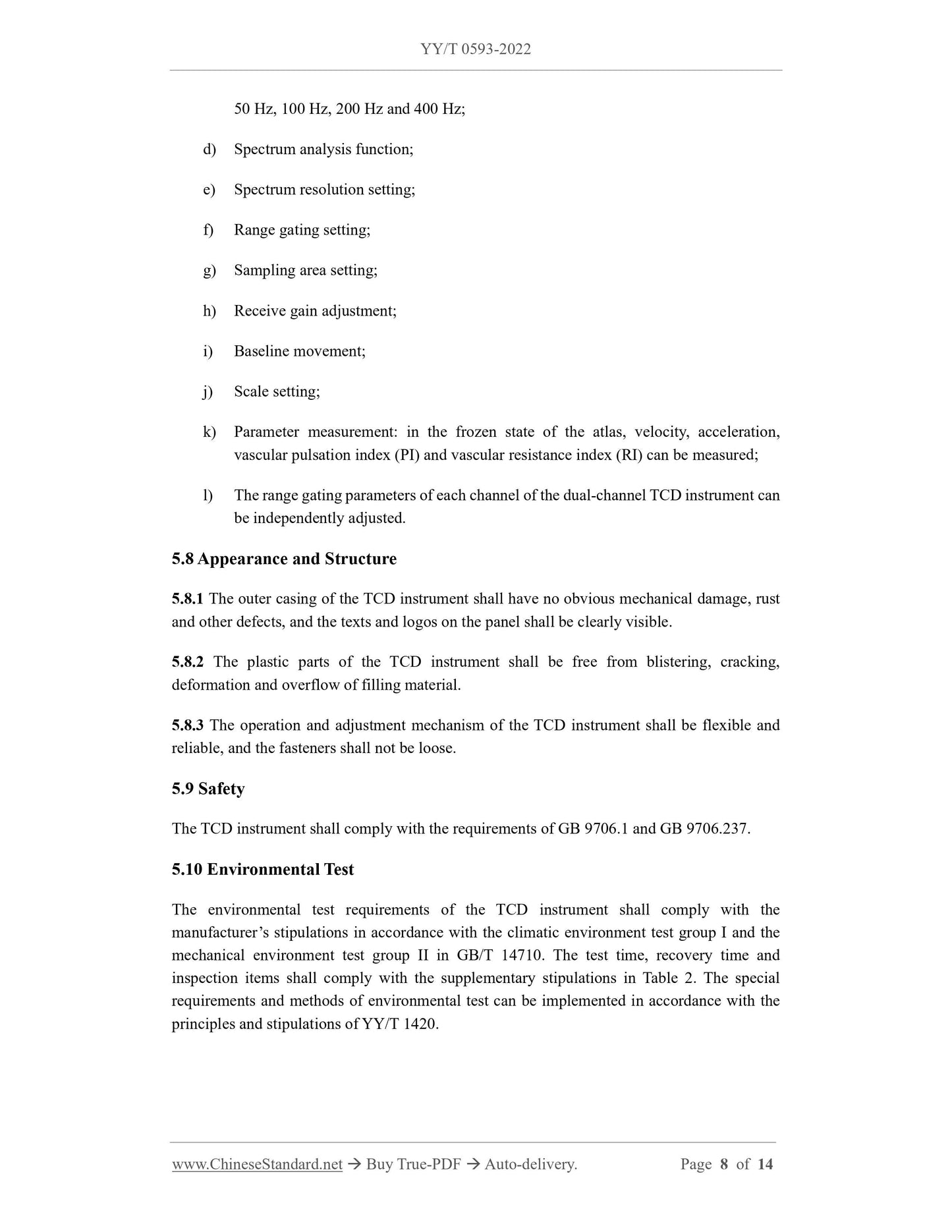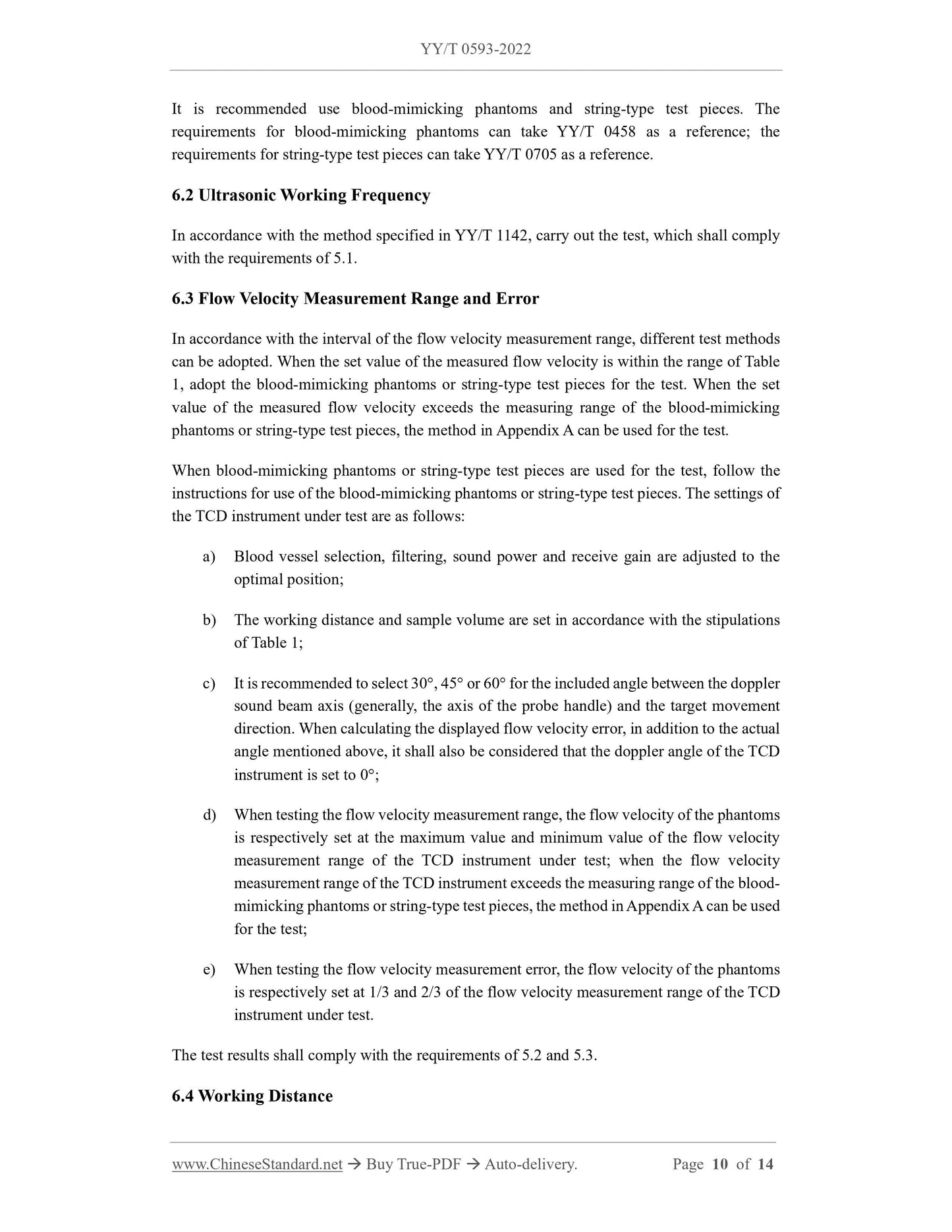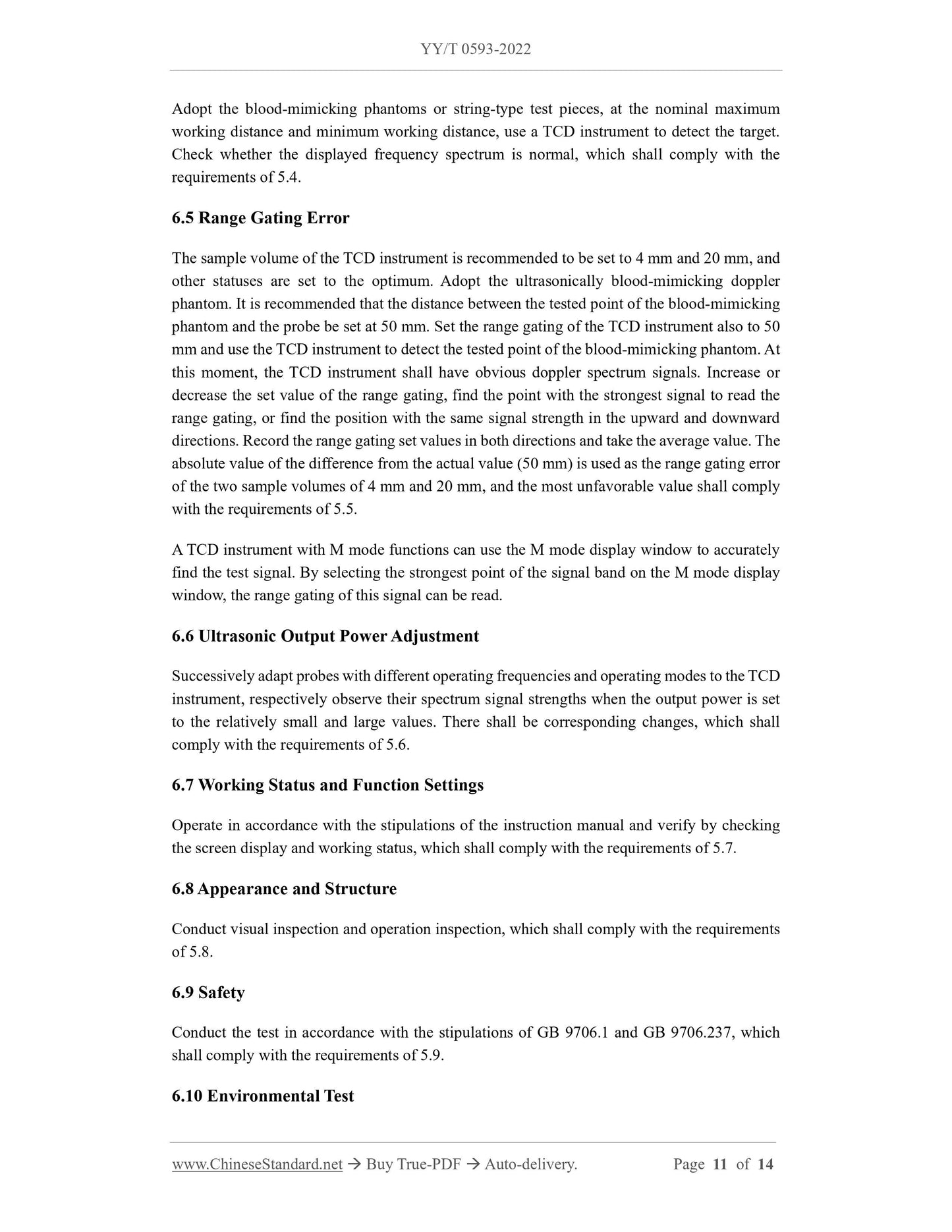1
/
of
7
www.ChineseStandard.us -- Field Test Asia Pte. Ltd.
YY/T 0593-2022 English PDF (YY/T0593-2022)
YY/T 0593-2022 English PDF (YY/T0593-2022)
Regular price
$195.00
Regular price
Sale price
$195.00
Unit price
/
per
Shipping calculated at checkout.
Couldn't load pickup availability
YY/T 0593-2022: Transcranial doppler ultrasound system
Delivery: 9 seconds. Download (and Email) true-PDF + Invoice.Get Quotation: Click YY/T 0593-2022 (Self-service in 1-minute)
Newer / historical versions: YY/T 0593-2022
Preview True-PDF
Scope
This document specifies the terms and definitions, product classification, requirements and testmethods for transcranial doppler ultrasound system.
This document is applicable to transcranial doppler ultrasound system (hereinafter referred to
as TCD instrument).
Basic Data
| Standard ID | YY/T 0593-2022 (YY/T0593-2022) |
| Description (Translated English) | Transcranial doppler ultrasound system |
| Sector / Industry | Medical Device and Pharmaceutical Industry Standard (Recommended) |
| Classification of Chinese Standard | C41 |
| Word Count Estimation | 10,137 |
| Issuing agency(ies) | State Drug Administration |
Share
